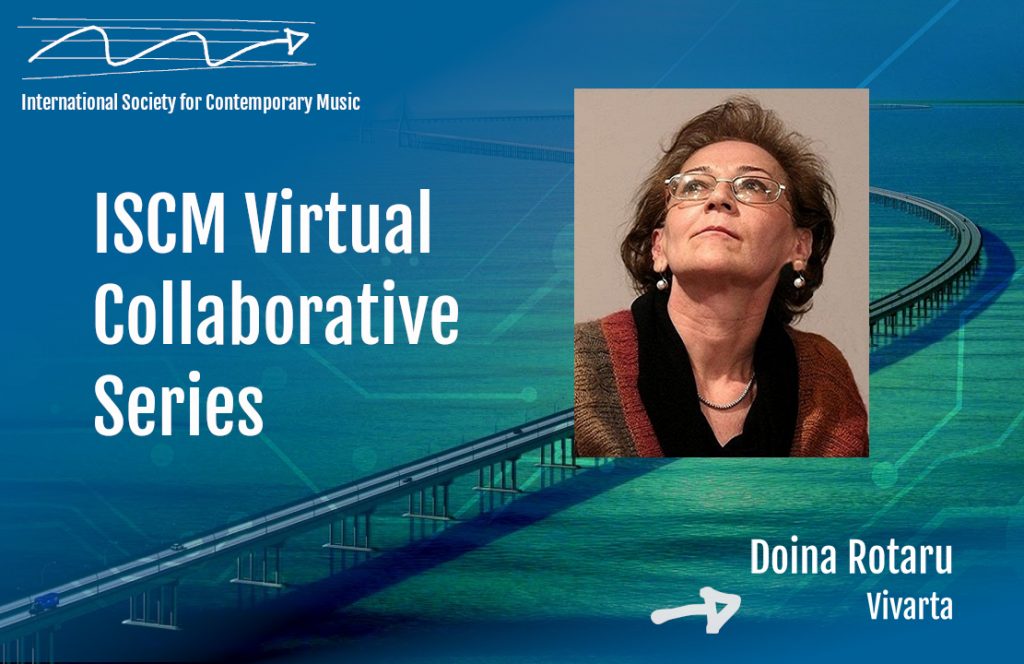Doina Rotaru: Vivarta

Doina Rotaru (b. 1951, Bucharest) studied composition with Stefan Niculescu and Tiberiu Olah at the National University of Music, Bucharest. In 1991, she was the recipient of a composer’s scholarship from the Hague Conservatory, where she studied with Theo Loevendie. In 1997, she was awarded a PhD in Musicology for her thesis on Solutions for New Music Provided by Archaic Traditions. Since 1990, she has taught at the National University of Music, where from 2008 to 2013 she was head of the Composition Department. Doina Rotaru is the author of twenty-five symphonic works, including three symphonies and thirteen concertos, and more than ninety chamber, instrumental, and choral works. She has received numerous awards: the Prize of the Romanian Academy (1986), the Prize of the Romanian Union of Composers and Musicologists (1981, 1990, 1992, 1994, 1997, 2001, 2004, 2007, 2011, 2014, 2015), and First Prize in the Gedok-Mannheim International Competition (1994). Her works have been performed in Europe, Australia, Canada, China, Japan, Hong Kong, Taiwan, and the United States of America. From the Romanian folk tradition Doina Rotaru has adopted the principles of continuous variation, heterophony, and modal harmony, demonstrating a particular interest in timbre, colour, and refined acoustics as a means of harnessing little-exploited resources of musical instruments. Doina Rotaru’s wholly individual style rests upon an archetypal aesthetics, consisting in the use of particular models of timbre and acoustics drawn from an ancient stratum of trans-geographic folk music (not only Romanian, but also from the Far East), as well as certain structural principles of symbolic value and function (circular and spiral forms, sacred numbers, and so on).
About her string quartet Vivarta, composed in 2009 and revised in 2017, the composer writes: “Vivarta” is a polysemantic term from Hindu philosophy. In my work I tried to find sonic correlations for several of its meanings: transfiguration, alteration, apparent change, the relation between One and Multiple, the circular return. Vivarta for string quartet can be described as a continuous transformational process (flux) with alterations in expression and sonorous substance, with frequent heterophonic multiplications and influences from Romanian archaic music, structured on the circular model of the spiral.
performed by the Arcadia Quartet
at the InnerSound International New Arts Festival #5
Sound Recording: Undersound
Videographer: Ion Adam
Assistant Videographer: Dalina Diaconeasa

ISCM
